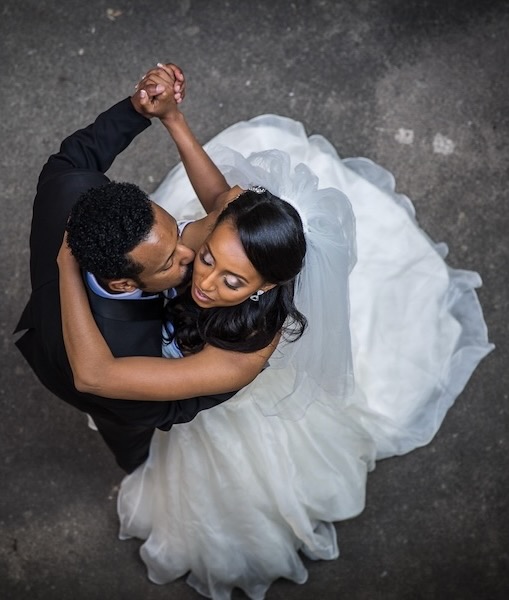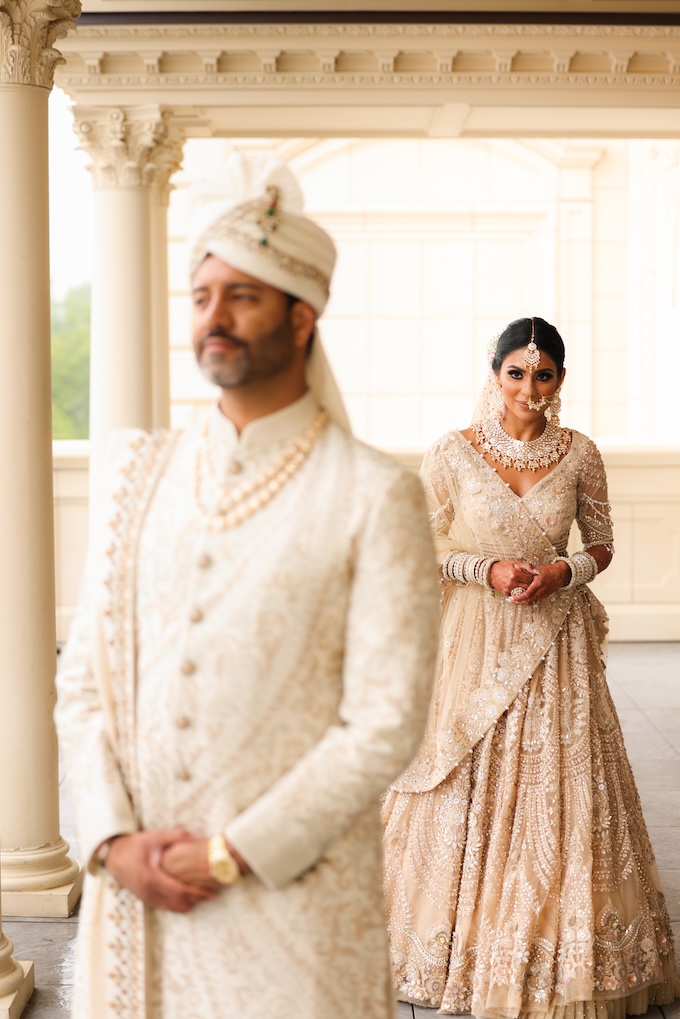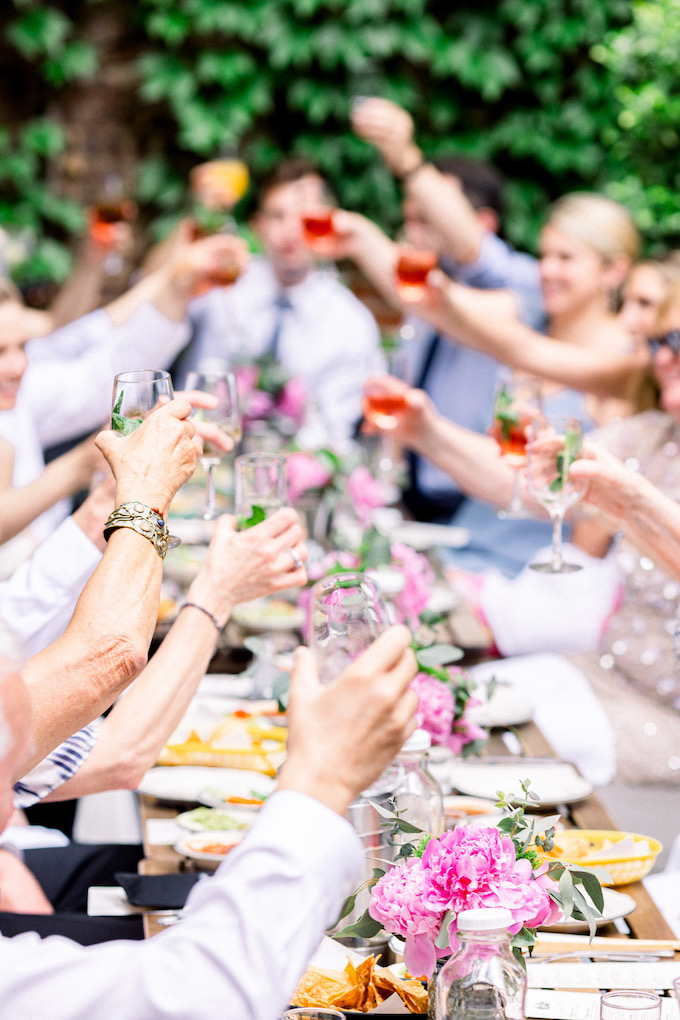Trending Now: What We Saw (and Loved) This Year in Wedding Photography
December 10, 2014
SHOOTING
Long Exposures
Most of the time, photographers set fast shutter speeds in order to get crisp images with no motion blur. When you break that rule by elongating your exposure, you open up a world of possibilities that allows you to take creative images while solving difficult lighting problems.
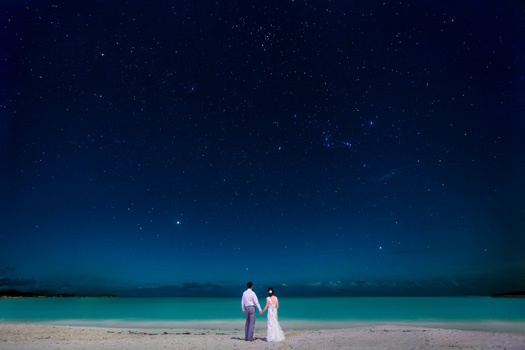
Photo © Two Mann Studios
With your shutter open, the stars come out, water runs like silk, fireworks fall from the sky, and you can create artistic photos no matter where you are. So, what if your clients ask you to take an outdoor portrait of them at midnight? Follow the lead of Two Mann Studios, using a simple 20-second exposure and the ambient light of the hotel behind them.
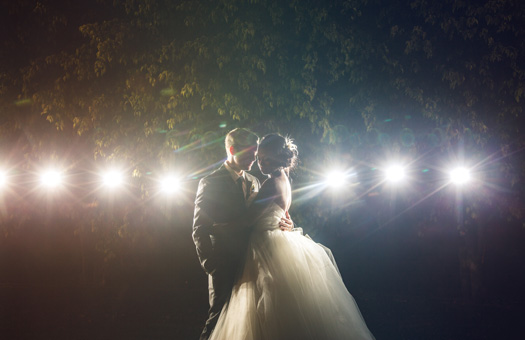
Photo © Jeff Newsom
California wedding photographer Jeff Newsom takes it a few steps further by combining a long exposure with double exposure. Newsom lights his subjects, then makes a backdrop by walking behind them and popping his flash in quick succession—all while the photo is being exposed.
Double Exposures
While some would say a good photo is one that’s taken in-camera in the moment, we say when it comes to art—if it feels good, do it! Creating double exposures in-camera is obviously time-consuming, but every once in a while, an opportunity calls for two photos in one.
“For us, double exposures started as happy accidents while shooting film,” say photojournalists and wedding photographers Craig and Kitty Fritz of Twin Lens in New Mexico. “Though we don’t use them for all of our weddings, when we do they serve nicely as an artistic tool that gives us one more way to set ourselves apart esthetically.”
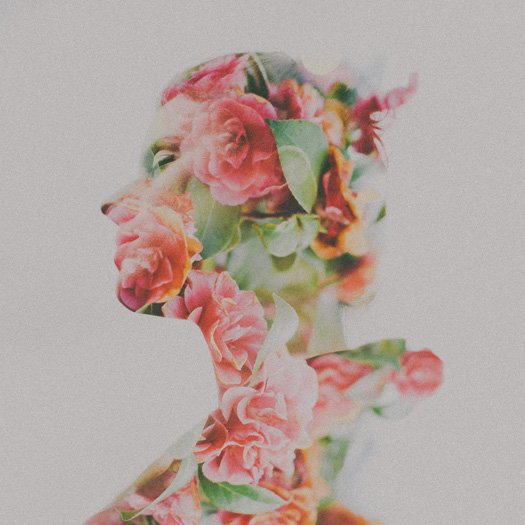
Photo © Sara Byrne/Dylan & Sara
For Texas wedding photographer Sara Byrne of Dylan & Sara, double exposures provide an interesting way to combine her two favorite subjects: people and nature. ”My double exposures are created in-camera using the Canon 5D Mark III,” Byrne says. “I typically start by taking a subject out to shoot the silhouettes using either the sun or an in-studio backlight setup. After I have that, I am free to go explore nature to find interesting textures and backdrops. Canon makes it easy to overlay the second image using live-view. I can even use that same silhouette several times if I don’t get it right the first time.”
SOCIAL MEDIA
Ello
When it comes to creating buzz, Facebook, Instagram, Pinterest and Twitter are still the places to be, but there are always new kids on the block hoping to get a piece of the action. The latest upstart, Ello, was created by artists with an intriguing, no-advertising model, larger image sizes than Facebook, and an option for posting nudes and boudoir images by using the hashtag #nsfw.
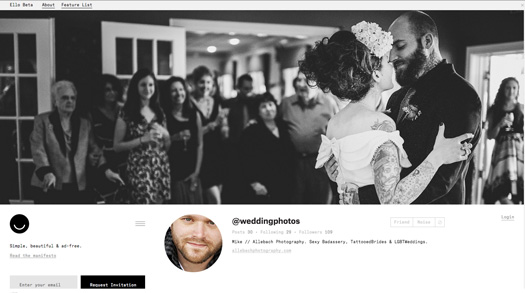
Photo © Mike Allebach
We asked one of its first adopters, New Jersey photographer Mike Allebach, whether or not it is bound to catch on. “It is still too early to tell, but I like the concept because Ello is a platform meant for showing off BIG photos, so it’s perfect for photographers who hate the compression and tiny photos of Facebook,” Allebach says. “Currently, Ello viewers can’t just ‘like’ a photo, they have to comment on it if they want to respond, which drives people to have real conversations about your posts.” Sounds good to us Mike; we’re looking forward to seeing if Ello is the next big thing in social media.
LIGHTING TECHNIQUE
Swapping Flash for Video Light
With decorative lights increasingly used for celebrations, photographers often need stronger lighting solutions for images. “LEDs present a special problem because they can turn everything in the room purple and other crazy colors outside of your camera’s color gamut,” says L.A. photographer Brian Callaway of Callaway Gable.
To combat this, he, his wife Allison, and photographers like D.C.’s Erum Rizvi are using video lights instead of flash. “I used my Torch LED light at my last wedding and it was awesome!” Rizvi says. “I shot a whole wedding with it and no flash. It was a constant battle of coordinating with my assistant holding the video light and monopod, but the look and feel of my images was worth it.”
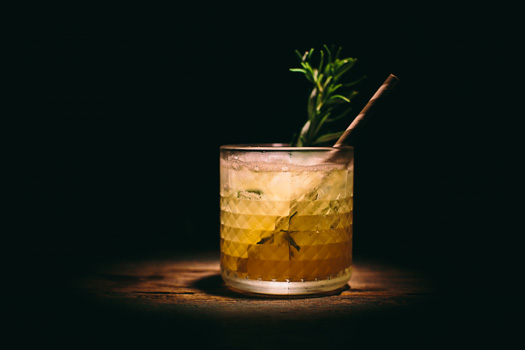
Photo © Allison Callaway | Callaway Gable
For portraits, Brian uses the Lowel GL-1. “It allows us to create more drama and mood,” he says. “The beam can be restricted so that there is no spill-off. First we meter for the room, paying attention to any ambient light that we want to add to our composition. Next we light just our subject.”
DESTINATION WEDDINGS
Weekend-Long Coverage
A destination wedding no longer calls for a single day of coverage; couples who travel far to tie the knot want their entire vacation captured, including the rehearsal dinner, day-after brunch, and fun activities like hiking, sailing, fishing and swimming. San Francisco’s Ben and Erin Chrisman of Chrisman Studios—who’ve photographed weddings in Italy, Bali, Iceland, Mexico, Hawaii, Guatemala and throughout the United States this year—say the majority of their bookings have been multi-day destination weddings, while U.K. photographers Ross Harvey and Adam Alex have increasingly seen their destination weddings in Europe turn into multi-day events.
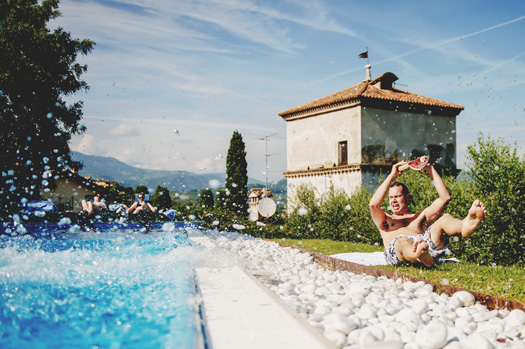
Photo © Ross Harvey Photography
Beyond a paycheck, the perks extend to the work itself; the Chrismans say that by the second day of an event, “we know everyone’s names, where they live and what they do. Everyone gets so used to us being around with our cameras that the photos evolve from being just about a wedding to being genuine portrayals of the characters and their specific traits. And that, to us, is what photography is all about.”
CAMERAS
The Rise of Mirrorless
With the Fujifilm X-T1 and the Olympus OM-D EM-1 rising to the top of the pack, 2014 proved that mirrorless cameras are here to stay. Leading photographers like Daniel Kudish and Tristan Shouldice (Fuji users), and Kate McElwee (who shoots with the Olympus) have all added them to their professional gear bags for extra cameras at weddings and even as replacements for their DSLRs. Why? Because mirrorless cameras can still be noisier at high ISOs and slower to focus in low light.
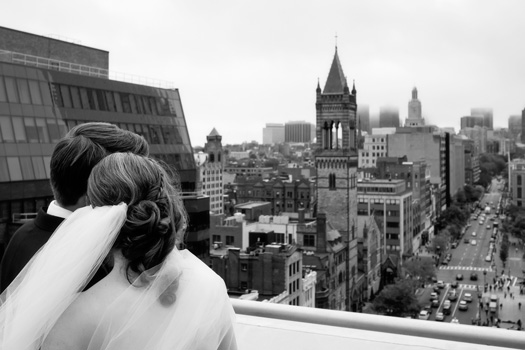
Photo © KATE MCELWEE
“I love my Olympus because it is super tiny and easy to carry around,” McElwee says. “It auto-focuses quickly, and by touching the LCD screen, you can choose your focus area and take the picture instantly. Olympus’ 60mm macro is equivalent to a 120mm, and it is perfect for my detail work. Plus, both the Fuji and the Olympus have Wi-Fi so you can transfer the pics to Instagram, add a couple of hashtags and send it out while the wedding is going on. Couples love it and it is great for marketing.”
BRANDING
Versatile Logo Designs
Of course you have a logo for your business card and the homepage of your website, but do you really need to repeat it everywhere you market your business? Not necessarily. Graphic designer Alejandro Gómez of In the Ointment (based in the Canary Islands) creates logos with a full suite of design elements that photographers can use for multiple purposes.
.jpg)
Catching on with top photographers such as Sean Flanigan and Joseph Victor Stefanchik, these artistic branding elements are used for watermarks and content icons, and then translate well to album covers, photo boxes, t-shirts, tattoos, etc. “My contribution is to change the mindset of [photographers],” says Gómez, who has designed for Volkswagen, Audi, Škoda, Honda and Heineken.
.jpg)
“Their branding needs to be an extension of their personality and the goal is always the same: to tell the real story behind each artist. A brand is not a logo, it’s an attitude and a mission— the logo is just the suit.” Stefanchik chose his unique design (including a winged lion) because he loved the bold symbolism and wanted “to attract a client with eclectic taste who embraces individual vision and seeks a photographer with visual depth.”
BUSINESS
One-on-One Mentoring
Photographers have always been a generous group, and lately more have been offering their services as mentors. Blowing up after a recent session on CreativeLive outlining her “Day in the Life” photo sessions, Colorado wedding and lifestyle photographer Kirsten Lewis is currently an in-demand mentor, as is Erwin Darmali of L.A.’s Apertura.
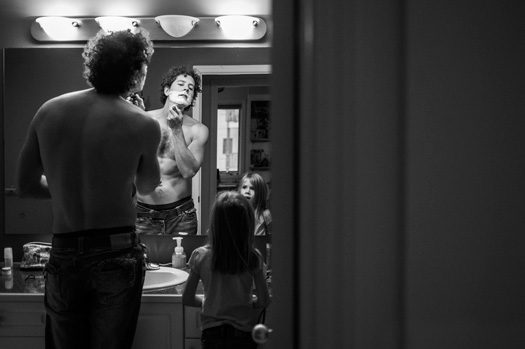
Photo © Kirsten Lewis
“[One-on-one] coaching is important because it ultimately fills a void for learning for photographers,” Darmali says. “You can learn by taking workshops, attending seminars or working by yourself, but these are different in effect and nature—they all lack the continuous support that many of us photographers need when we are trying to get better.”
For those looking to take their photography to a new level in the coming year, or for a sound voice to help with the challenges and choices that come with being a photographer, finding the right mentor is an excellent option. While Lewis is usually contacted after her speaking engagements and takes on up to 12 mentees at a time, most clients find photographer mentors through their local networks.
VIDEO
Hyperlapse
While time-lapse has its place on many filmmakers’ reels, the newest craze is hyperlapse—also called “motion timelapse” and “walklapse.” “Hyperlapse is a technique that allows you to apply the standard timelapse principle (taking a lot of photos over an extended period of time) to a camera that moves over bigger distances,” says Matthew Vandeputte, a Sydney-based film editor. He’s been using the technique since 2012, and has created a hyperlapse video for a “big-budget” Australian wedding.
“Instead of moving the camera a millimeter for every photo as you’d do on one of those slider systems, you move the camera a foot or a meter in between photos. After the shoot, you stabilize the footage using software like After Effects and compile it into a video. The end result is a clip where everything is sped up and the camera seems to be flying through time and space. That’s where the ‘hyper’ comes from—it’s like a timelapse on steroids.”
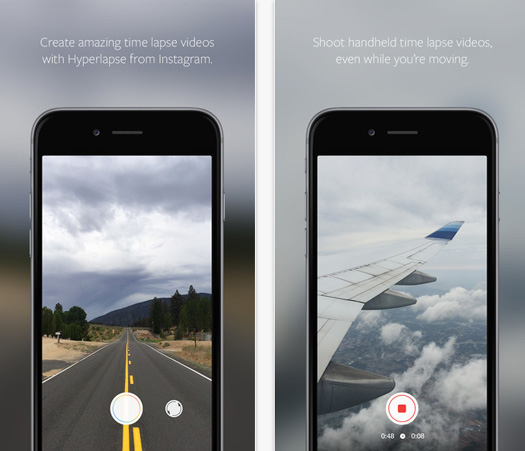
The Hyperlapse app for Instagram (named “The Best App of 2014” by the Washington Post’s “Innovations” blog editor) has even popped up, creating an easy alternative to get the super-speedy effect. “It’s such a great way to do a time-lapse video,” says Ailecia Ruscin of Oh Snap! Photography in Lawrence, Kansas, who’s used it for one wedding so far. British photographer James Heffernan of FunkyPixel Photography has also played around with it for weddings.
As for the hyperlapse trend, Vandeputte predicts it will be used “a ton” in the future because it adds such a unique perspective. “Clients are always impressed with the resulting footage because few of them even realize what is possible,” he says. —JG
MARKETING
Winning Big
Photography contests are nothing new, but winning awards as a marketing strategy has never been more popular. When looking at top photographers online this year, couples were likely to see at least one of the following honors featured on their websites: a Fearless Award, a Junebug Weddings Best of the Best, a PDN Top Knots, Rangefinder’s 30 Rising Stars, or WPPI’s 16×20 Print Competition. Winning an award from any of these curators can help elevate name recognition and, inevitably, bookings.
Photographer Jacklyn Greenberg of Jag Studios says, “While I submit to contests mainly because they make me critique my own work, I recently booked one of my favorite weddings from a photo shown on Junebug’s Best of the Best. I’m grateful to those judges for the recognition, and for the opportunity to have my work seen by a large audience, but what matters most to me is that the photo spoke to my clients and that they wanted me because my style matched theirs.”
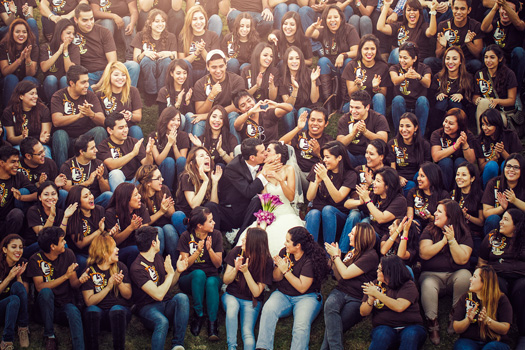
Photo © Adán Díaz
In addition to bringing in more bookings and opportunities, contests also help raise the bar for the wedding photography industry as a whole by encouraging photographers such as Adán Díaz, Morgan Lynn Razi and Juya Gentil to look for and shoot award-winning images for their clients who enjoy being part of the process.
Related Links
The Entrepreneurs: Exploring the Business Opps of Photography
That’s a Wrap: The Trade Show Buzz, Trends and Highlights at WPPI 2014

